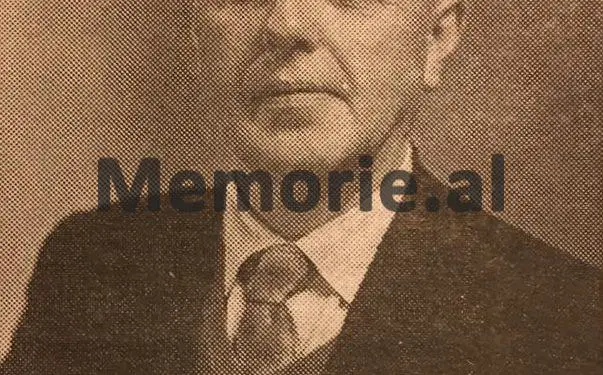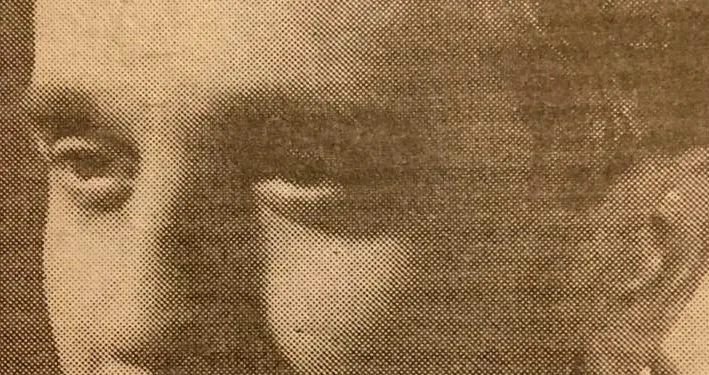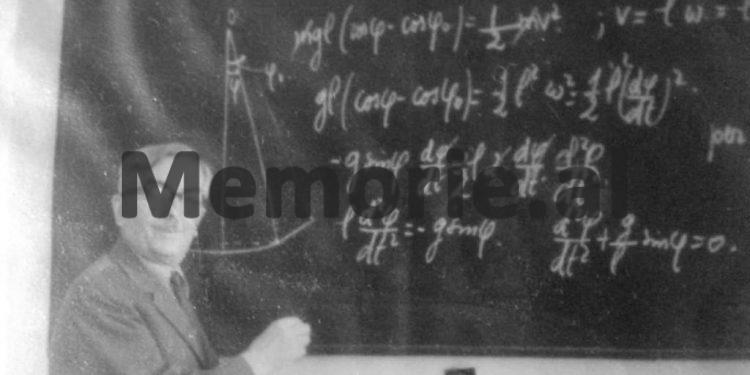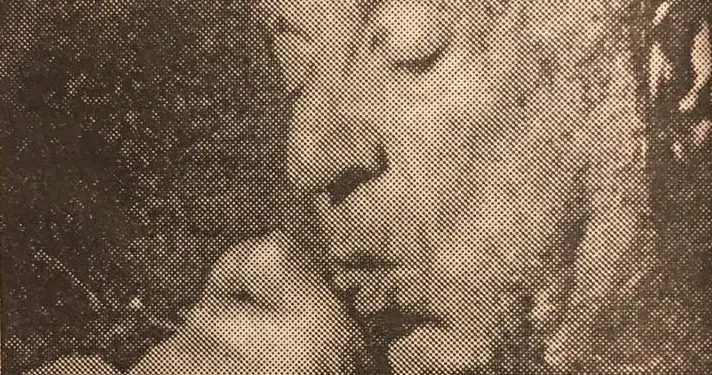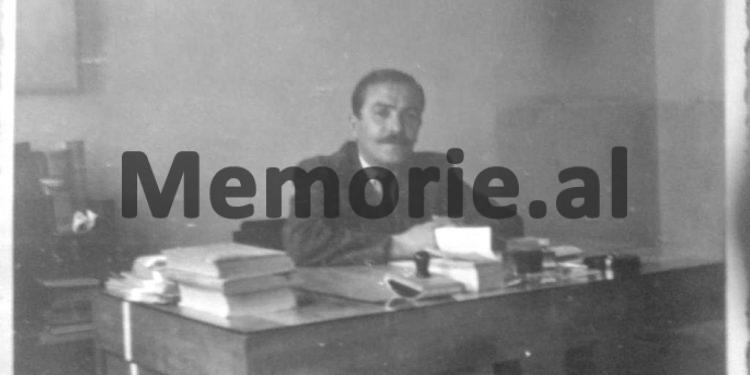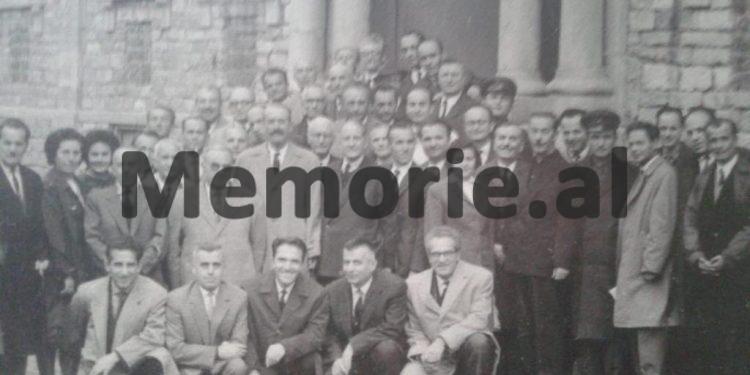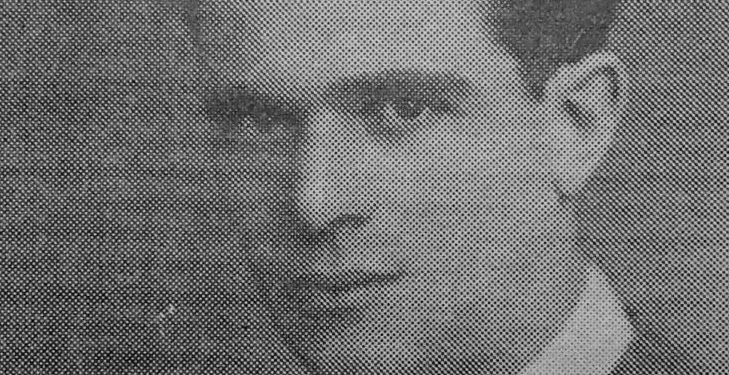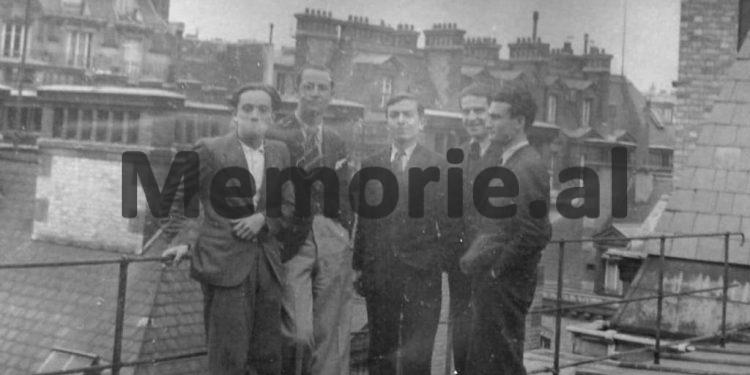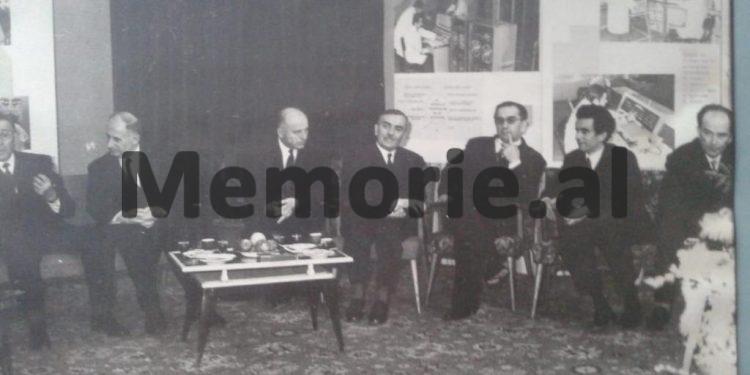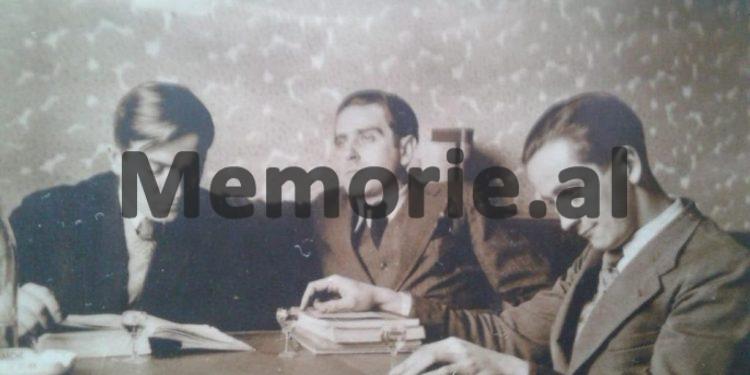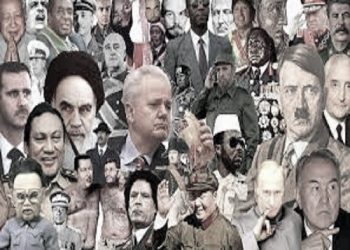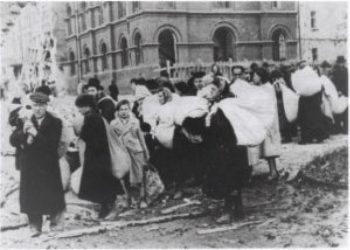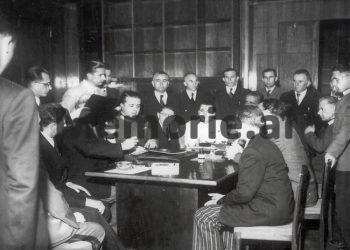Dashnor Kaloçi
Second part
Memorie.al/ publishes the unknown history of the villages Drenovë – Boboshticë of Korça district which are located at the foot of Morava mountain only 8 km. away from the city, which, not only for their picturesque nature and ancient history (according to the renowned scholar, Prof. Dr. Sotir Temo, dates back to the 11th century), but also for the wise people who have drawn from decades ago, like; Viktor Eftimiu, Kristaq Antoniu, Sotir Kuneshka, Dhimitër Canco, Gjergj Bubani, Gjergj Canco, etc., names and famous personalities, artists, writers, scientists and prominent intellectuals of various fields, has aroused the curiosity of many foreign visitors and scholars from distant Europe, like the Frenchman Andrea Mazoni, who visited him in August 1936, even writing two books, (‘Dokuments Contest et Chanson Slaves De L’Albania Du Sud’) only about Boboshtica and her people smart. As well as the unknown writing of Themisto Dodonari in August 1945, entitled “Two academic communications in the village of Drenovo” and subtitle “The foundation of a historical archive of the villages Drenovo – Boboshtica”, where he describes some cultural and artistic activities developed in those villages with a big name, even outside the borders of Albania.
Not only villages, but even many cities in Albania would envy Boboshtica, the village located at the foot of Morava south of the city of Korca. The big village, or small town as it is rightly called the ‘blessed place’ that is located about 8 km. far from Korça, with the picturesque nature that adorns the winter with its white snow ‘mantle’ under the golden rays of the sun that shine far and wide from Gramoz to Mal i Thatë, for the wise people it has produced since the beginning of the century past, has piqued the curiosity of many scholars since Far Europe. Many artists, writers, scientists and intellectuals of various fields, such as Viktor Eftimiu, Kristaq Antoniu, Sotir Kuneshka, Dhimitër Canco, etc., names and well-known personalities who have become famous not only in Albania but also abroad, will to make Boboshtica “measured” and with many of the big cities of our country, feeling many times “bigger” than them! But what is this village, since when are the beginnings of its knowledge and who are the wise people that the famous Boboshtica has produced?
Followed by the last number
Eftimiu, the world-famous playwright who was self-taught!
Viktor Eftimiu was born in the village of Boboshtica in Korça in 1889. His grandfather’s name was Grigor Ekonomi and he served as the village priest. Like many of their fellow villagers, the Eftimiu family moved from the village to emigrate to Romania in the early twentieth century. In 1914, he started a family by marrying the famous Romanian actress, Agepsina Makrin. In 1920, at the age of 31, he was appointed general director of Romania’s theaters. Eftimiu, one of Romania’s most famous playwrights, was given a permanent lodge at the Bucharest Theater. Ft Eftimiu remains a rare case in the history of great people who have become famous for their works, studying self-taught, as he taught only three school classes at the Lyceum of Bucharest and then dropped out. Although uneducated, Eftimiu took advantage of his natural intelligence to become famous all over the continent. Thus. during the First World War, when another famous actor of Albanian origin, Aleksandër Moisiu, was taken prisoner as a soldier at the front, it would be exactly Ë Eftimiu, the one who would make his release possible. Even the release of Moses took place after a letter that his German wife sent to ft Eftimi for her husband. After his release, as a sign of gratitude, Aleksandër Moisiu, performed in his honor in Bucharest, the drama, “The Living Corpse”. Eftimiu has also served for a period of time as president of the Romanian Writers and Artists Association. During World War II, his two houses, in Bucharest and Boboshtica, were burned by Nazi troops. Ft Eftimiu, throughout his creative career, wrote over 60 thousand verses, over 150 books of poetry, poems, poems, lyrics, drama, novels, stories, etc. His choice as an academic, made him appreciated with many titles and decorations. Although Romania greatly appreciated Eftimiu, he never forgot his country of origin, Albania, which he visited in 1971.
Kristaq Antoniu, famous actor and tenor
Kristaq Antoniu was born in Bucharest on December 2, 1907. His family had moved from Boboshtica and emigrated there for economic reasons. From an early age, Antoniu showed tendencies for acting and high vocal qualities. After many vicissitudes and help from his friends from Boboshtica, he could enroll in the school, “Mimo – Dramatic”, where actors and filmmakers were trained. From the beginning of his studies, Kristaq Antoniu was distinguished for his rare talent. He completed his higher studies in the Kanto branch in 1928 and then, his acting intuition would begin to be tested until he was entrusted with his first role in “The First Sin”, a short film., of 1924. After this interpretation, he became active in feature films, such as: “Uncle Enea Kokoroçi in Çiflig”, “Jadesh”, “Napasta”, “Lyra”, “Attack”, etc. In 1928, he successfully starred in ‘The Antagonist Thief Merenau’ in “Janku Zhianu” and the other film “Haiduci” in 1929. But what would “seal” his success were the films: ” Major Murra “in 1927 and” Çokoj “in 1931, as the performance in these films, would be massively appreciated by the Critics of the cinematography of the time. Regarding this, the magazine “Minerva”, published in Tiorana, wrote, among other things: “For some time now, a charming Albanian boy, endowed with rare artistic qualities, looked like a star in the Romanian sky. The world was amazed. from his talent, as the name Kristaq Antoniu, exalted the fame of his country “. But unfortunately, the financial difficulties of the firm “Clipafilm”, where he was employed, as well as the unequal treatment with the Romanian actors, made him leave the cinematography and dedicate himself to canto. In 1932, Antoniu came to Albania where he gave several concerts, such as in Tirana, Durres, Elbasan, Korca, etc., where he had many successes. After an unfulfilled promise of a scholarship to Austria, Kristaq Antoniu finally returned to Albania in 1938. A few years later, in 1943, Antoniu starred in a short film, directed by Mihallaq Mone, entitled “Meeting at the Lake.” In this film, besides him, the actors, Merita Sokoli and the Xhaçka sisters also starred. After the end of the war, Antoniu devoted himself entirely to the Opera and Ballet Theater in Tirana, where thanks to his achievements and a brilliant career, he was awarded the highest title: “People’s Artist”. Antoniu passed away in Tirana in 1979.
Gjergj Bubani, director of Radio – Tirana
Gjergj Dionis Bubani was born in the village of Boboshtica in Korça in 1899. He completed primary school in his native village and then attended the Lyceum of Korça, which Bubani at that time made the road Boboshtica – Korca, every day on foot, (round trip), to attend Lyceum lessons. After graduating from the French Lyceum with very high results, he went to study in Athens where he graduated in Natural Sciences at the Faculty of Chemistry. At the age of 22, he went to Bucharest, where he was married to his sister, Maria (with an Albanian) and there he was appointed editor-in-chief of the newspaper “Shqipëria e Re”. Among the many articles by Buban published in that newspaper, it is worth mentioning the one entitled: “Kosovo in danger” (against the Serbian genocide against Kosovars) and the one: “Two points of tears”, about the loss of Saint Naum. In 1922, Bubani published the literary magazine “Dodona”, where they wrote the most famous names of Albanian letters and personalities, such as: ft Eftimiu, Asdreni, Lasgush Poradeci, Mit’hat Frashëri etc. In the years 1932-’33, Bubani published in Constanta, Romania, the newspaper “Kosova” (46 issues) and in that organ, he unmasked with facts and documents, the Serbian genocide against the people of Kosovo. In 1934, he published the newspaper “Mecli Kombëtar” in Bucharest and in 1936, he came to Tirana and was appointed editor-in-chief of the newspaper “Drita”. On November 28, 1938, on the occasion of the inauguration of Radio Tirana, on the ‘Independence Day’, Bubani was appointed as the first director of this radio. On April 4, 4, and 6, 1939, three days before the military aggression of fascist Italy against Albania, Bubani spoke from the microphone of Radio Tirana (in several foreign languages) against this invasion. On April 9, he resigned as director of the Radio and asked to return to Bucharest, where he had a family (wife and son, Dionysus, who was in the second grade of high school). George’s second son, (Loredani), was born on April 28, 1939, but the Italian fascist authorities did not allow Buban to leave Albania, fearing the publication of a newspaper that would expose the fascist occupation of Albania. Under these conditions, Bubani continued to hold the position of director of the Radio and throughout the occupation until October 18, 1943, when all staff of Radio Tirana were arrested by the Germans. This came after the German forces in Tirana had information that Radio – Tirana had turned into a “nursery” of the Antifascist Movement and Bubani together with all the staff, could escape after the intervention of Mihal Zallari (Speaker of the Albanian Parliament in 1943 -’44), near the German command. With the arrival of the communists in power since the end of 1944, Bubani was arrested by them and in the Special Court, held in March 1945, Prosecutor Bedri Spahiu requested his sentence of 30 years in prison. But the court sentenced him to 15 years in prison, a sentence he did not serve, as after the break-up with the Yugoslavs in 1949, when what became known as the “Party Turn” took place, he was released from prison as a victim of Koci Xoxes “, and passed away in the early 50’s, crushed by prison wounds.
Sotir Kuneshka, pioneer of Physics in Albania
Sotir Kuneshka was born in the village of Boboshtica in 1912. After finishing primary school in his native village, he also graduated from the French Lyceum in Korça in 1932. After failing to obtain a state scholarship, his father, a teacher in Boboshtica, decided and sent him at his own expense to Paris, to study at one of the universities of the French capital. At the behest of his father, on his way to Paris, Sotiri contacted Andrea Mazoni (the well-known French scholar of Boboshtica), who helped him a lot to stabilize in the French capital. The first years at the University of Paris (branch of Physics), he had quite difficult, as he was forced to work and earn to afford studies. Based on this, he started working giving private lessons to high school students. While the last two years of college until graduation, he was awarded a half scholarship. After graduating from college and graduating in Paris with very high results, Kuneshka returned to Albania and was appointed as a professor of Physics in several state gymnasiums, such as in Korca and Tirana. After the end of the war, Kuneshka worked in the Ministry of Education, where he drafted many new texts in the subject of Physics. With the opening of the two-year Institute and later the Faculty of Natural Sciences, Professor Kuneshka was one of their founders. Seeing the great shortage of staff (Physics lecturer,) Kuneshka was forced to teach all the Physics textbooks studied in high schools. He is the founder of the Department of Physics and for a long time has been the dean of the Faculty of Science. In 1982, on the occasion of the 80th anniversary of Prof. Dr. Sotir Kuneshkës, Dr. Prof. Rexhep Meidani, in a commemorative article in the press of that time, wrote, among other things: “The first text of University Physics in our country, bears the name of prof. Kuneshkës. The first scientific article in the field of Physics in our country, has as author Kuneshka, the first titles of assistant professor, professor and academic, have been given to Sotir Kuneshka “.
Gjergji Canco, “Teacher of the People”
Gjergj Canco was born in Boboshtica in 1906 and he finished primary school in his native village and then attended the French High School in Korça, which he graduated in 1937. From a very young age in the high school, he devoted much to literature and published in school literary magazines, such as Hope. In addition to works in prose and poetry, Canco published in 17 issues of newspapers, translations by various French authors, such as: La Martin, Balzac, Hygo, etc. Gjergji was in the first group of Albanian students who went to study in France in the mid-1920s and he enrolled in one of the universities of Montpellier, in the branch of Mathematics. After finishing his studies in France, Canco returned to Albania and settled for a short time in Tirana. When he had not yet recovered from the long journey, he received a letter from the director of the American Technical School, Harry Fultz, which read: “clear on line and surface projections. You have plenty of time with which you can give students ideas and knowledge they need and can split your time.” Shortly after this letter that Fultzi wrote to Canco, inviting him to teach Mathematics at the Technical School, he replied in the affirmative, and at that school Canco taught until 1936, when by order of King Zog, he was transferred to the State Gymnasium in Shkodra. In that gymnasium, Cancon was occupied by the fascist occupation of Albania. After the end of the War, Canco was appointed principal of the Technical School (formerly Fultz’s school), where he had taught years before returning from France. In that school, Canco worked with great dedication, until he retired in 1966. For his great work at the Polytechnic of Tirana, Canco was decorated with the titles “Hero of Socialist Labor” and “Teacher of the People”. He passed away on August 22, 1971, being remembered with respect by all his colleagues and students.
Miço Canco: My country is Albania
Eftim Canco, or as he is known by his friends and relatives, Miço, was born in the village of Boboshtica in 1915. After graduating in the Romanian capital, Bucharest for Justice, he wrote several articles in the magazine “Oshtima” which was the literary organ of Albanian students in Romania. Regarding this, one of his relatives, Zhani Gjergj Canco, among other things, says: “It was May 1961, when Albania was leaving the bloc of socialist countries, or as they were otherwise known, ‘the countries of the People’s Democracies’. The Bucharest meeting was held where official Tirana had spoken out against Moscow’s political line and was preparing to establish and consolidate relations with Mao Zedong’s People’s Republic of China. a fourth-year student came in and asked who the student with the surname Canco was? After I met this student, he told me they were waiting for me down at the faculty door with another person.I went downstairs and saw an old middle-aged man in “Are you the one I was looking for?” he addressed me as soon as we met, explaining that he had thought that I was not dealing with a friend or brother who is now in Albania and they call him Eftim Canco. who is bab’s first cousin ait tim. I saw that he was homesick and after inserting my arm, he told me that you would reserve me a few minutes. And we both sat in a cafe located between the Faculty of Architecture and the Albanian Orthodox Church in Bucharest. “You have something in common with my friend Micon because I knew him at this age,” he told me. Pazi lit a cigarette, said to me: ‘We parted alive and I do not know if this expression exists among you Albanians?! Miço was an excellent student and a great intellectual, to whom the professor who gave us ‘Civil Law’ asked him to stay in Romania, as his assistant, but Miço refused. “Romania prepared me as a cadre, but my country is Albania,” he declared. “I want to be close to Korça and my hometown Boboshtica,” he said. So boy, when you go to Albania, say that a friend who lives not far from the ‘Arc of Triumph’, remembers and greets you”. Here I parted with the man who spoke with great nostalgia about Mico Canco, my father’s first cousin who came to Albania and worked as a lawyer in Korça until 1967 when the communist regime abolished the Ministry of Justice and at the same time the institution of advocacy. Miço passed away in Korça in 1982”.
Other well-known intellectuals from Boboshtica
Boboshtica, the famous village that resembles a town with very picturesque landscapes and landscapes, did not exclude from its ranks only ft Eftimiu, Kristaq Antoniu, Dionis Bubani, Sotir Kuneshka and Cancot. As early as the 19th century, dozens of Boboshticars would be educated at various universities inside and outside the country. Among the famous people who brought out that village are: Ilo Kuneshka, brother of Prof. Sotir, Sotir Manushi, Sotir Temo, Dhori Canco (graduated in Bulgaria), Andrea Manço (graduated in the former Soviet Union for Engineering-Geology) , and his brother Todo Manço (graduated in Poland, MP and Chief Mining Engineer at the Ministry of Heavy Industry and Mining, “Hero of Socialist Labor”), Stavri Xhara, (graduated in Agronomy in Romania), Sotir Filto ( famous general graduated in military academies of the former Soviet Union), engineer Pavllo Koço, (one of the founders of Elbasan Metallurgy), Gaqo Xhara (graduated in Mathematics), Misto Lolo (graduated in Medicine, Todo Gjermeni (graduated in Agronomy), Dionis Bubani, (journalist, writer and translator), Vaso Skënderi (Graduated in Mathematics), Leka, Todo, and Boris Canco, (Mico’s sons who studied and graduated in Physics, Teacher, and Agronomy), Mihal Qirko, Petro Filto, etc. List of bobos educated and graduated students with high results who have made a name for themselves in the respective fields is very long and finally we can mention the son of prof. Sotir Kuneshkës, graduated in Physics, who in the late ’90s, was in a working group dealing with scientific research in Antarctica./Memorie.al




